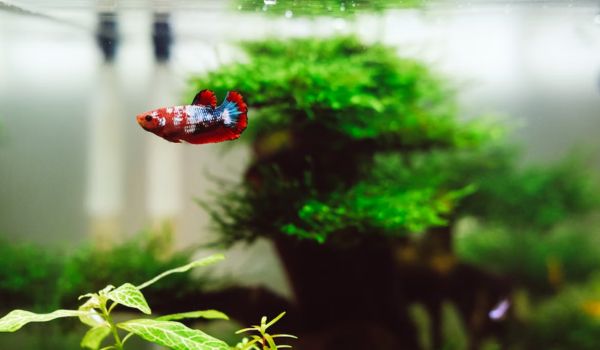Did you know that pets can positively impact a teenager’s mental and physical well-being? Studies have shown that owning a pet can reduce stress, improve mood, and promote a healthy lifestyle.
But with so many different types of pets to choose from, it can be challenging to determine which one is the best fit for your teenager. The options are endless, from options are endless, from furry friends like dogs and cats to scaly ones.
In this blog post, we will explore the top pets for teenagers and provide tips on how to choose the right pet for your family. So, whether you are looking for a loyal companion or a low-maintenance pet, keep reading to discover the best pet for teenagers!
8 Best Pets for Teenagers
1. Dogs
Dogs are undoubtedly the most popular pets in the world, and it is not hard to see why. According to a survey conducted by the American Pet Products Association, approximately 70 percent of American households own at least one dog. Though the underlying reasons for their popularity might be numerous, the most prominent ones are their loyalty, individually unique personalities, and their equally intense love for us.
For teenagers, owning a dog can have therapeutic qualities that can help tame the beasts inside young people. Not to mention, teenage rebellion is a widespread phenomenon. However, dogs can provide a sense of purpose and a loyal friend who will never judge based on appearance or actions. In fact, a study published in the International Journal of Workplace Health Management found that bringing dogs to the workplace can reduce stress and increase job satisfaction. If dogs can positively impact adult mental health, it’s no surprise that they can also be beneficial for teenagers.
Our canine pals positively impact our health by reducing stress, anxiety, loneliness, and sadness. According to a study, owning a pet can lower blood pressure, reduce cholesterol levels, and decrease the risk of heart disease. Dogs can provide a sense of stability and comfort for teenagers who are dealing with hormonal changes and rapid life adjustments over the adolescent years. Dogs can also be a great motivator for physical activity. Taking a dog for a walk or playing fetch can be a fun and effective way to get some exercise and combat a sedentary lifestyle.
In addition to the physical health benefits, dogs also provide emotional support to their owners. Pooches will be their best friends who will never judge them based on how they look and what they do. They offer a non-judgmental ear to listen to and a loving presence to comfort. A dog’s unconditional love can be a powerful force in a teenager’s life, especially during difficult times.
Here is some advice for teens: adopt a dog from a shelter!
Not only will you be giving a home to a friend who will be on your side through thick and thin, but it is also great to put puppy mills out of business. Puppy mills are large-scale commercial dog breeding operations that prioritize profit over animal welfare. Dogs raised in puppy mills often suffer from health and behavioral problems, and their living conditions are typically overcrowded and unsanitary. Adopting a dog from a shelter can provide a loving home to a furry friend while supporting a worthy cause.
It is important to note that owning a dog is a big responsibility, and teenagers should carefully consider their lifestyle and living situation before deciding to bring a dog into their home. Dogs require regular exercise, proper nutrition, and socialization to thrive. It is important to ensure that you have the time, resources, and commitment to providing for your dog’s physical and emotional needs.
Additionally, different dog breeds have unique personalities, energy levels, and care requirements. Some breeds may be better suited for families with children, while others may require more training or space. Researching different breeds and consulting with professionals, such as veterinarians or animal behaviorists, is important to find the best fit for your family.
Best Dog Breeds for Teenagers
- Labrador Retriever
- Pug
- Newfoundland
- German Shepherd
- Corgi
2. Cats
If your teenager is a “cat person,” then cats are a great option. Not only are cats low-maintenance pets, but they also offer a sense of calmness and companionship that can be beneficial for teenagers. One of the most significant advantages of owning a cat is its independence.
They do not require daily walks or constant attention, making them ideal for teenagers who are often busy with school and other responsibilities. In addition, cats are known for their cleanliness and hygiene, which means they are easy to take care of and require minimal grooming. They are also more affordable to care for than dogs, which can be a significant factor for families on a budget.
Despite their reputation for being aloof, cats can also be incredibly affectionate pets. They often have unique personalities and quirks, making them just as interesting and lovable as dogs. For teenagers who may be going through difficult times, owning a cat can offer a sense of comfort and companionship. In fact, studies have shown that spending time with a cat can lower stress levels and improve overall mental health.
When it comes to choosing a cat, adopting it from a shelter is the best option. Not only does it give a cat a second chance at a loving home, but it also allows teenagers to take pride in saving a life. Adopting a cat from a shelter is also a great way to teach teenagers about responsibility and the importance of giving back to the community.
In terms of care, cats require daily attention to ensure their health and happiness. Providing fresh food and water, keeping their litter box clean, and providing stimulating toys are all essential for the well-being of your feline friend. Additionally, regular visits to the vet for check-ups and vaccinations are crucial to ensure your cat remains healthy and happy.
Best Cat Breeds for Teenagers
- Maine Coon
- Birman
- Siamese
- Burmese
- Persian
3. Fish
Fishes can be ideal pets for teenagers who want low-maintenance companionship. They are a great option for parents who want to teach their children responsibility without taking up too much space. Unlike dogs or cats, fishes are quiet and require little attention, making them an excellent pet for a teenager with a busy schedule.
Fishes can also be incredibly therapeutic. The calming sound of the water and the peacefulness of watching the fish swim can help reduce stress and anxiety levels in both teenagers and adults. Moreover, owning a fish can also be an educational experience for teenagers. Fish tanks require specific water conditions and temperatures to maintain a healthy environment. Taking care of the fish will require your teenager to research and learn about water conditioning, fish compatibility, and the overall ecosystem of the tank. This can be an exciting opportunity for teenagers to learn about biology and marine life.
Additionally, there is a wide range of fish species available to choose from. From colorful tropical fish to exotic species, you cannot limit what you can add to your aquarium. Your teenager can personalize their fish tank by choosing decorations, plants, and even the type of substrate. This level of customization can help teenagers express their creativity and make the fish tank their own.
However, it is important to note that fish do require proper care to keep them healthy and happy. Your teenager must regularly clean the tank and change the water to keep the fish healthy. Overfeeding can also be a common problem, leading to health issues for the fish. Teenagers need to learn how much and when to feed their fish and avoid overfeeding them.
Best Fish Types for Teenagers
- Guppy
- Neon Tetra
- fish Gold
- Zebra Danios
4. Geckos
Geckos are also low-maintenance creatures that do not require daily attention, making them ideal for teenagers with busy schedules or limited time to dedicate to pet care. They can easily live in a small terrarium or habitat with a heat source, substrate, and some hiding spots. As for their diet, geckos mostly eat insects, so feeding them is easy and affordable.
Additionally, geckos are fascinating animals with unique personalities. They can develop a bond with their owners and even recognize their voices. They are also great for educational purposes, as they can teach teenagers about biology, anatomy, and the natural world. Keeping geckos as pets can inspire teenagers to become more curious about science and the environment. Another benefit of owning a gecko is that they are quiet pets.
They do not bark, meow, or make any loud noises, which is perfect for families living in apartments or shared spaces. Unlike dogs or cats, geckos do not require walks, which means they can be left alone for long periods without needing attention. This is a plus for teenagers who value their independence and privacy.
Lastly, owning a gecko can teach teenagers responsibility and discipline. They need to clean their terrarium regularly, provide fresh water, and ensure their gecko is healthy and comfortable. This will help teenagers develop good habits and a sense of accountability. Furthermore, caring for a gecko can give them a sense of purpose and a feeling of accomplishment as they see their pet thrive under their care.
Best Gecko Types for Teenagers
- Leopard Gecko
- African Fat-Tailed Gecko
- Crested Gecko
- Tokay Gecko
5. Bunnies
If your teenager is looking for a cute, entertaining, and relatively low-maintenance pet, then a bunny could be a perfect choice. These adorable little animals are surprisingly smart, and with a bit of patience and training, they can learn a wide range of tricks and behaviors. In addition, rabbits are generally very clean animals and do not require as much attention or exercise as some other types of pets. This makes them an ideal option for teenagers who are busy with school, sports, or other activities.
Another great thing about bunnies is that they are very social animals and love spending time with their owners. Many rabbits will even hop over to their humans for a quick snuggle or head rub. This can be a great source of comfort for teenagers who are feeling stressed or anxious. In addition, rabbits are known for their calming presence, and many people find that simply watching them play and hop around can be incredibly soothing.
One thing to remember is that rabbits require a certain level of care and attention. For example, they need fresh food and water every day, and they should always have access to a clean litter box. In addition, they need plenty of exercises and mental stimulation to stay healthy and happy. This means providing them with plenty of toys, hiding spots, and opportunities to explore. Another important consideration when getting a bunny for your teenager is the cost.
While rabbits are generally less expensive to care for than dogs or cats, they still require some financial investment. You will need to purchase a cage or hutch for your bunny, as well as bedding, food, and other supplies. You may also need to pay for veterinary care occasionally, especially if your bunny becomes sick or injured.
Best Bunny Breeds for Teenagers
- Holland Lop
- Mini Lop
- Rex Rabbit
- California Rabbit
6. Birds
Birds are not only great companions, but they also come in a variety of sizes and colors, making it easy to find one that matches your teenager’s personality. Parakeets and cockatiels, for example, are popular choices for teenagers because they are relatively easy to care for and can be taught to mimic words and sounds.
On the other hand, African grey parrots are known for their high intelligence and ability to communicate complexly with their owners. Regardless of the species, birds require a certain level of care and attention. Your teenager must provide fresh food and water daily, regularly clean the cage, and provide plenty of toys and enrichment to stimulate their feathered friend. But with proper care, birds can live for many years, making them a long-term commitment that can help teach responsibility and compassion.
Best Bird Types for Teenagers
- Canary
- Parakeets
- Lovebirds
- Cocktail
7. Hamsters
Hamsters are also very adaptable to living environments. They do not need a lot of space and can thrive in smaller habitats, which is great for teenagers who may not have a lot of room in their homes. Hamsters also come in a variety of breeds, each with its unique personality and traits. For instance, Syrian hamsters are the most common and can be kept alone, while dwarf hamsters are social and prefer to be kept in pairs or groups. Roborovski hamsters are known for their high energy and are the perfect pets for active teenagers.
In addition to being low maintenance, hamsters are also relatively inexpensive to care for. Their food and bedding can be bought in bulk and are readily available at most pet stores. And because they are small, they do not require a lot of food or water. However, it is essential to note that hamsters have a shorter lifespan compared to other pets, living only two to three years on average. But they can bring joy and companionship to your teenager’s life during this time.
One thing to remember is that hamsters are nocturnal animals, meaning they are most active at night. This could be a challenge for teenagers who prefer a quiet environment while sleeping. But with the proper care and attention, hamsters can be trained to be quieter during the night and more active during the day, which could work for teenagers who have more flexibility in their schedule.
Best Hamster Types for Teenagers
- Syrian Hamster
- Dwarf Hamster
- Chinese Hamster
8. Horses
However, the rewards of having a horse as a pet are immense. Horses are majestic creatures that bring their owners joy, beauty, and companionship. They can help teenagers develop a sense of discipline, focus, and patience as they learn to care for their animals. Riding horses is also a great form of exercise that can help teenagers stay physically fit and mentally balanced. It teaches them to work in harmony with their pet, learn new skills, and build self-confidence. Furthermore, spending time outdoors with a horse can help teenagers develop a deeper appreciation for nature and the environment.
Horses also have a positive impact on mental health. Being around horses has been shown to reduce stress, anxiety, and depression in people. They have a calming effect on humans and can help them feel more relaxed and at peace. For teenagers who may be dealing with the pressures of school, social relationships, and other stressors, having a horse as a pet can be an excellent source of emotional support.
Lastly, horses can provide opportunities for teenagers to participate in various equestrian sports and competitions. These activities promote teamwork, sportsmanship, and healthy competition. They also offer teenagers a chance to make new friends who share their passion for horses and riding. If your teenager is a daughter, it will be an added benefit since women love horses[HF1] .
Best Horse Breeds for Teenagers
- Haflinger
- Morgan
- American Quarter
- Arabian
Why Should You Get Your Teenager a Pet?
It Reduces Loneliness
Some teenagers might suffer social isolation due to various causes. Pets play an important role in overcoming this challenge. According to a recent study, pet animals can reduce adolescent loneliness, and they feel like they have a friend. Overall, it makes a good impact on health.
It Provides a Soothing Effect
Touching and cuddling with a pet is as relaxing as doing with a human being. Petting animals also releases oxytocin which helps relieve stress and anxiety. Your teenager may also reduce cortisol levels this way, making him or her feel good during difficult times.
It Leads to Emotional Development
Teenagers can get under stress due to several reasons. When they see the sufferings of an animal, they naturally tend to show empathy and even form bonds with the latter. This provides them with a great way to develop several emotional feelings.
What Should You Consider Before Getting Your Teenage a Pet?
Financial Commitment
Pets do not come for free. Neither should they be considered for granted. You need to assess your or your teenager’s financial position before you add a pet to your home. Just to give you an idea, according to an estimate, keeping a small dog needs up to USD 420 annual commitment.
Time Management
Pets need enough time for grooming, socialization, and health maintenance. If your teenager is not responsible enough to provide for those, you must not go for letting her or him have a pet. But you can surely teach your teenager and supervise the interactions before they become mature enough.
Social Issues
Some friends of your teenagers might not welcome their new pet. People are generally hesitant in some cultures across the world when it comes to keeping an animal as a pet. Say if your teenager is in a relationship, he should be mentally ready to deal with his girlfriend if she asks him to choose between her and his dog.
Health
Allergic reactions to pets can cause symptoms such as sneezing, coughing, itchy eyes, and even asthma attacks. These symptoms can disrupt daily life and impact a teenager’s ability to focus and perform well in school. In addition to physical symptoms, pet allergies can lead to emotional distress as a teenager may have to give up a beloved pet or avoid spending time with friends with pets.








